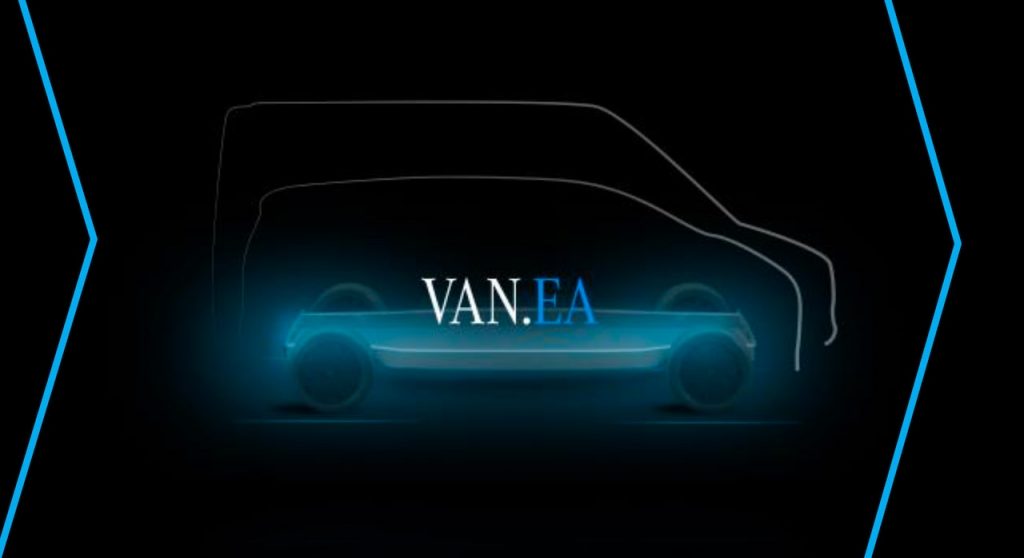Mercedes-Benz has unveiled its latest innovation, the ‘Van Electric Architecture’ (VAN.EA), which will serve as the foundation for all forthcoming medium-sized and large vans starting from 2026. The automaker’s objective is to raise the proportion of fully electric vans to 50 percent by 2030.
As an interim target for 2026, Mercedes-Benz aims for a 20 percent share of electric vans, building upon its existing portfolio of electric models. In 2022, out of the total 411,000 Mercedes vans delivered, only 14,700 were equipped with electric drives, accounting for a mere 3.6 percent share. However, the company anticipates a substantial leap forward after 2026 with the introduction of the initial VAN.EA models.
The VAN.EA platform was conceived as a purpose-built electric vehicle architecture, with the goal of reducing the number of variants in the portfolio by over half compared to current internal combustion engine (ICE) models, while simultaneously maintaining diverse application options for customers. Mercedes-Benz Vans places great emphasis on efficiency and performance within VAN.EA, optimizing all aspects of the vehicle, including aerodynamics, electric drivetrains, tires, and the body.
The primary objective is to achieve the maximum possible range with an optimal battery capacity tailored to the customer’s specific usage requirements, as vehicle weight and price are directly influenced by the battery size. Furthermore, the VAN.EA enables a clear distinction between private luxury vans and premium commercial vans, providing maximum synergies. Although the exact implications of this differentiation are not explicitly stated, it holds significant relevance for current commercial vans with electric propulsion. Commercial customers aim to avoid unnecessary costs associated with oversized batteries, desiring only the range necessary for their operations. Conversely, private customers seek the capability to drive over 300 kilometers with their high-end luxury vans or electric campers during vacations.
The scalability of different vehicle sizes will be facilitated by the modular design of the VAN.EA platform, comprising front, middle, and rear modules. The front module encompasses the electric drive and front axle. The middle module allows for scaling the vehicle length and houses the standardized battery case, accommodating high-voltage batteries with various capacities. The rear module exists in two versions: one with an electric motor for all-wheel drive VAN.EA variants and one without for front-wheel drive variants.
Mercedes will employ the VAN.EA-P variant for luxury vans aimed at private customers. Notable features of this variant include the Mercedes-Benz Operating System (MB.OS) with integrated networking capabilities and Level 2 autonomous driving systems (upgradable to Level 3 by 2020). Additionally, Mercedes highlights the expected range of over 500 kilometers for the VAN.EA-P, although further specifics are not provided.
On the other hand, the VAN.EA-C is intended for premium commercial vans in the medium-sized and large segments. It offers a tailor-made solution for customers prioritizing functionality, range, payload capacity, and cargo space. With its modular and scalable design, this architecture can be customized for various configurations and upfitter solutions, including courier, express, and parcel delivery vehicles, ambulances, eGrocery vans, municipal vans, flatbeds, lifting platforms, and recreational vehicles (RVs).
Andreas Zygan, Head of Mercedes-Benz Vans Development, emphasizes that the VAN.EA was developed entirely as a purpose-built electric vehicle to fully leverage the advantages of this new technology. He further explains that the target of achieving more than a 50 percent battery electric vehicle (BEV) share by 2030 aligns with the company’s commitment to significantly reduce CO2 emissions throughout the lifecycle of new vans.
Mercedes-Benz Vans announced the global production plans for VAN.EA models in January, initially mentioning a start date in 2025. Production will take place not only in Europe (at facilities in Düsseldorf, Ludwigsfelde, Jawor, and Vitoria) but also in the United States and China. Europe currently represents the strongest market, accounting for 60 percent of total sales worldwide. Mercedes-Benz Vans aims to strengthen its position in this region, while also identifying substantial growth potential in the United States for premium commercial large vans and in China for luxury private vans.
Mercedes identifies both growth and profit potential in these markets, aligning with its strategic plan to elevate market positioning and profitability through the utilization of technology and the brand’s influence. The vans division operates as a fully integrated business within Mercedes-Benz, possessing the autonomy to make decisions that cater to the unique needs of its customers. Additionally, the division benefits from technology and innovation sharing with the passenger car business. Mercedes-Benz Vans holds a prominent position in the premium market segment, enabling it to generate strong returns that complement the luxury car business.
Furthermore, Mercedes intends to revise the current midsize vans, including the EQV and eVito, prior to the introduction of the VAN.EA. These updates will encompass a new exterior and interior design as well as a new generation of the Mercedes-Benz User Experience (MBUX) system, further reinforcing the brand’s commitment to luxury. A teaser image showcases a significantly larger front grille than before, taking inspiration from the design of the S-Class.
